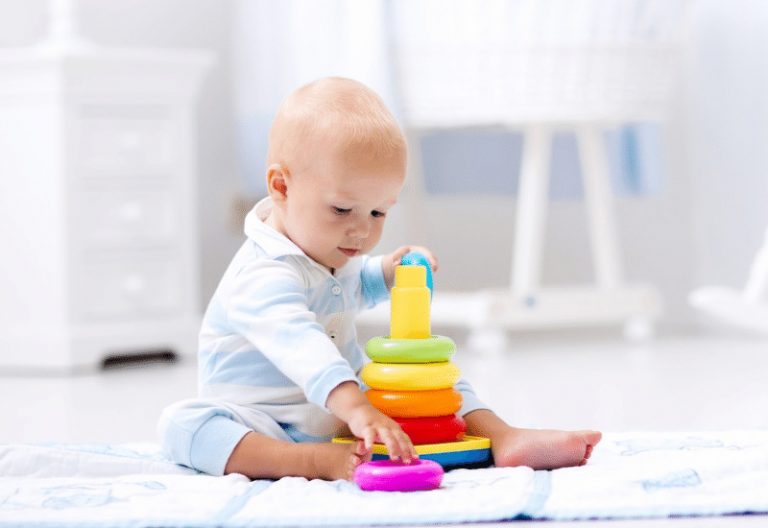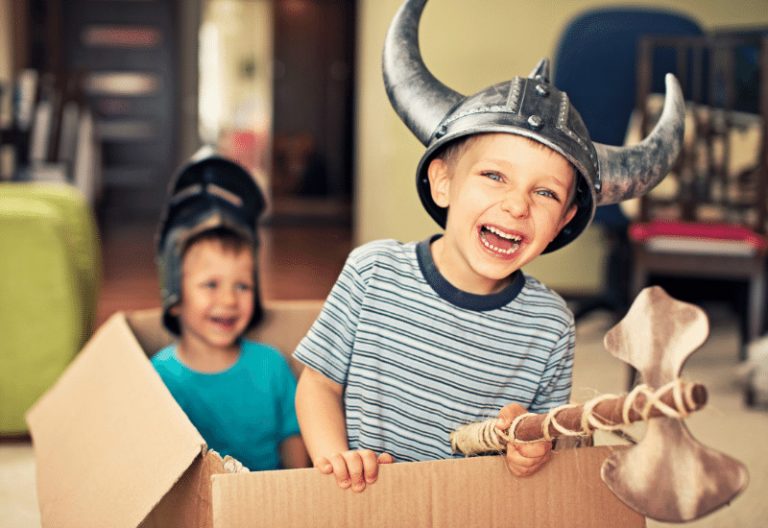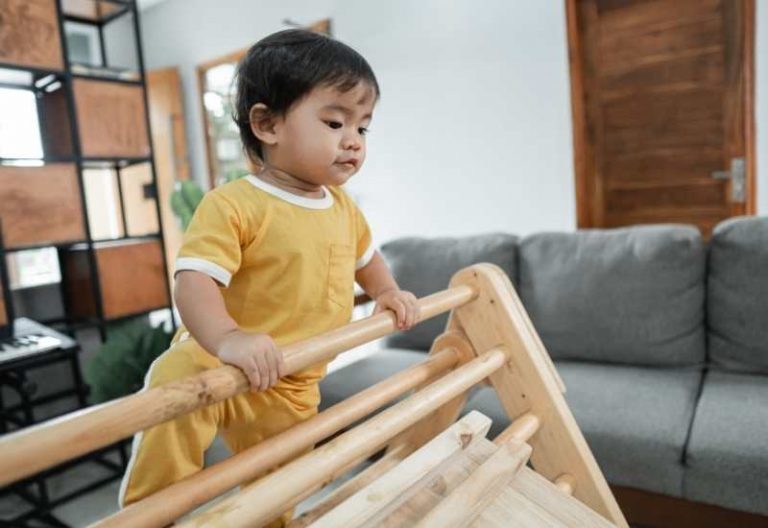Why independent play is important for cognitive skills and health
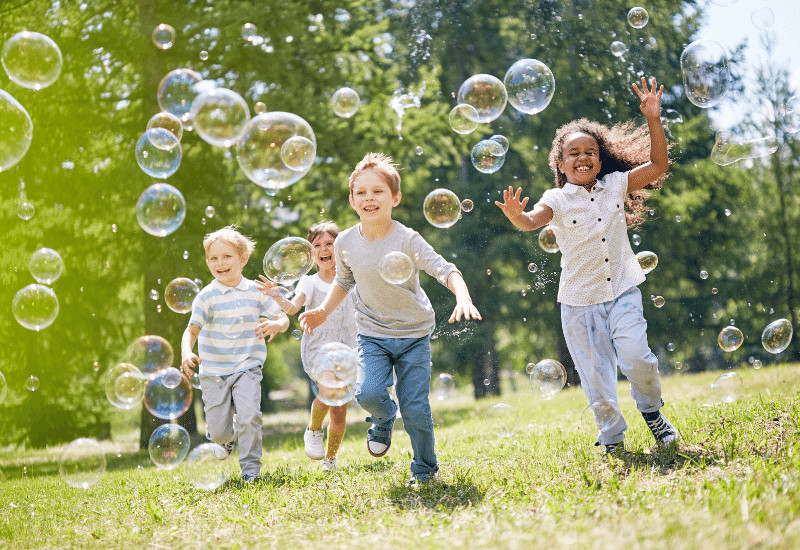
In Scandinavia, a happy childhood is filled with imagination and bruises from playing outside.
That’s pretty much the recipe for happy kids around here.
We let kids play independently every day, because when they do, they develop imagination and independence. It’s an important part of their development because kids who have independence are less likely to be anxious and more likely to grow into capable, self-sufficient adults.
Today, we’re going to look at why you should get started with independent play and what the MANY benefits are for brain development and health. And trust me, they are extensive and well-documented.
When you’re ready, here’s the next step: how to encourage independent play.
Let’s dig in.
This post contains referral links for products I love. Danish Mom earns a small commission at no extra cost to you if you purchase through my links. Thank you for your support ♡
Table of Contents
What is independent play?
Independent play is when your child plays on its own without parents interfering. While you’re present and available, you’re not in control of the activities.
In Scandinavia, we call it unstructured play.
It’s free, unstructured, independent, and open-ended play; and the child is in charge, not the adult. It’s the opposite of structured play, which is planned and intentionally directed by an adult – like organized sports (e.g. soccer) or board games with rules.
In free independent play, your child can explore and experiment, and this is important for children’s creativity, learning, and development, according to research.
Read next: Curious about Nordic parenting? Here’s what you need to know about independent play in Scandinavia.

What are the benefits?
The benefits of play are many and well-documented.
When children play alone (without adult participation or supervision), they’re allowed to feel what it’s like to decide for themselves. THEY have to take the initiative and make things happen. And they have to solve the problems that arise themselves.
Experiences like these give children a sense of competence (“I can do it!”) and they can transfer it directly to real-life situations.
Research shows play can improve children’s abilities to organize, plan, get along with others, and regulate emotions. In addition, play helps with language, math, and social skills. It even helps children deal with stress, such as life transitions like entering preschool.
Another study shows that children who were in active play for one hour per day were better able to think creatively and multitask.
These are some of the many benefits of independent play for kids:
Improved cognitive skills:
- Creativity
- Independence
- Problem-solving
- Self-reliance
- Better learners
- Enhances curiosity, which facilitates memory and learning
- They can entertain themselves
Health benefits of play
The health benefits of play that involve physical activity are many, according to The Power of Play.
- Healthy body weight and cardiovascular fitness
- Better immune system
- Decreased BMI (for outdoor play)
- Less stress, fatigue, and depression
- Better agility, balance, and coordination
Win-win for Mama, too
Another benefit of unstructured play is that you get time to yourself, too. And that’s pretty handy when you need to get dinner ready, clean, get dressed, or simply need a moment to yourself.
Independent play is a win-win for everyone in the family!
Examples of independent play
Independent play is any kind of activity where the child plays on its own. If it involves toys, they’re usually open-ended toys. It can be:
Indoors:
- Dress up
- Singing
- Figurines (dinosaurs, peg dolls, animals)
- Cars, trains or construction toys
- Building (blocks, magnetic tiles, legos)
- Puzzles
- Playing kitchen
- Coloring, painting, drawing
- Play Dough, kinetic sand, slime
Outdoors:
- Jumping in puddles
- Playing ball
- Balancing on tree trunks
- Rolling in the grass
- Playground
- Climbing in trees
- Building a snowman
- Building a cave (playing in a tree house)
- Playing picnic
- Digging in sand and mud in the sandbox
Read next: 15 best toys for independent play
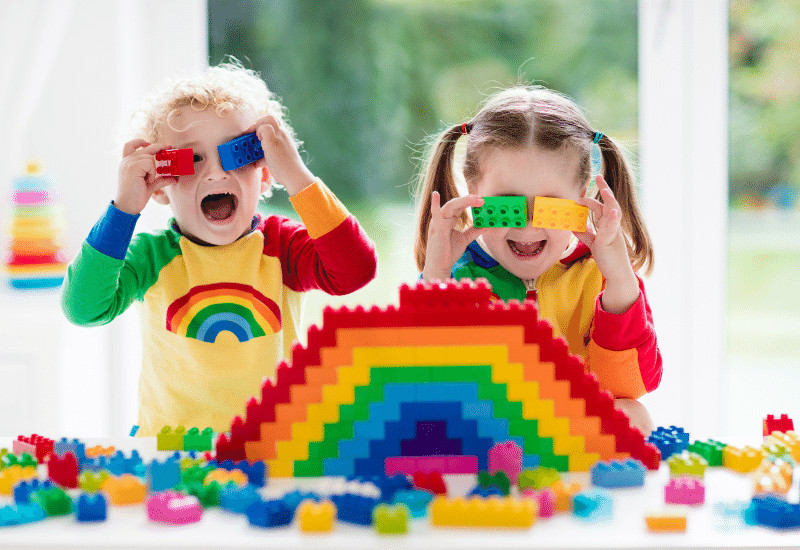
When can kids play independently by age?
0-1 year
When it comes to independent play for babies, you can start early. I started when my kids were around 3 months old. Make sure there’s no danger around and no toys that are small enough to be swallowed, and always be close by. Start with 10 minutes two times a day and then slowly increase.
1-3 years
Independent play for toddlers requires help and inspiration from the parents. Toddlers can help mommy out in the kitchen or help do the laundry. Theo has been helping with laundry since he was 1 year old, and he loves it. At this age, 30-60 minutes per day is perfect.
+3 years
Children over 3 years are capable of playing by themselves – and it’s important to give them space for that.
Pay attention to what they might need before they can complete or get started with playing, without ‘fixing’ and completing things for them. For example, if they want to build a pillow fort, it’s often the process that’s the most fun, and not necessarily the finished fort.
Read next: 10 best imaginative play toys for toddlers to keep it FUN
How to encourage independent play
First, mama, you have to let go of the mom guilt.
I mean it.
You’re NOT neglecting your child by letting him play on his own. Quite the opposite, actually. You’re helping him grow into a strong, confident man, who can make decisions on his own.
Research has shown, time and again, that unstructured free play and solitary independent play benefit our children. They have fun. They learn.
And that’s our goal, right?
To raise happy, confident, and resilient kids. And don’t worry what other people think, because your child is learning something important – to be independent.
I’ve written an in-depth guide on how to encourage independent play. Go read it and get my steps to teaching your kids to play on their own.
Toys for independent play
The best toys for independent play are open-ended toys, which means they’re without a goal. My favorite open-ended toys for babies is the Oball and an activity stand, and my favorite open-ended toys for toddlers are Lego and play food.
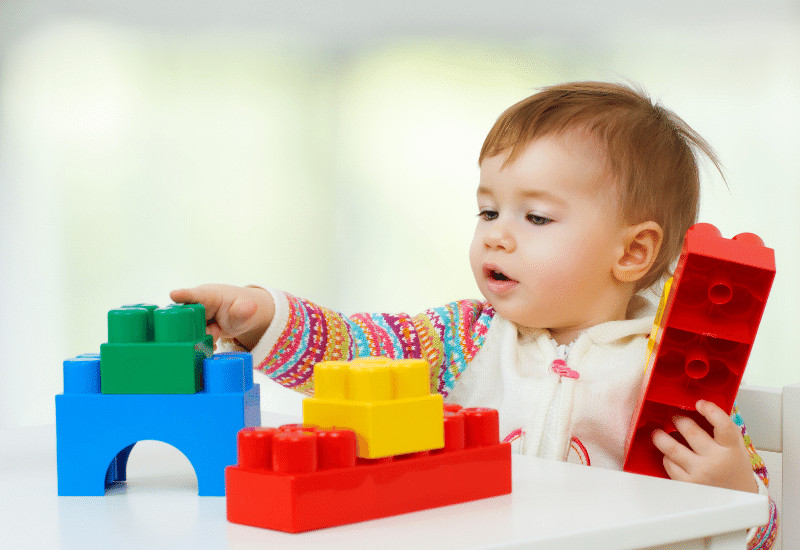
FAQ – Independent play
At what age should a child play independently?
At the age of 3 months old is the best time to introduce independent play.
As they grow, and can walk and move easily, you can then introduce different kinds of toys for independent play.
How long should a 3-year-old play independently?
By the time your toddler is three years old, they should be able to play independently every day.
When independent play begins at 3 months, they might play independently for 10 minutes. By three years, they can engage in solo play for up to an hour.
What are the 4 types of play?
Developmental psychology researcher Sara Smilansky defined the four types of play as:
- Functional play
- Constructive play
- Games with rules
- Dramatic and sociodramatic play (also known as pretend play)
Is it OK to let a toddler play alone?
Absolutely. Provided, of course, that you have given them a safe and comfortable space in which to play.
Independent play is vital for the development of your little one’s physical and mental development. And, so, independent play is encouraged and should be practiced daily.
What is independent play time by age?
Independent playtime varies by age:
- 0-6 Months: Short periods, a few minutes. Babies explore their surroundings and toys near them.
- 6-12 Months: Around 15-20 minutes. Babies play with toys and start to explore more.
- 1-2 Years: Up to 30 minutes. Toddlers engage in simple play activities like stacking blocks.
- 2-3 Years: Around 30-60 minutes. Kids start more imaginative play and simple puzzles.
- 3-4 Years: About 45-60 minutes. Play becomes more complex and imaginative.
- 4-5 Years: Around 1-2 hours. Children engage in detailed imaginative play and can focus longer.
- 5+ Years: Varies widely. Kids can play independently for longer periods, depending on the activity and their interests.
Here are the sources for the guidelines on independent play time by age:
- The American Academy of Pediatrics (AAP) provides guidelines and research on child development stages, which include recommendations on play and independence.
- Zero to Three, a national nonprofit dedicated to early childhood development, offers detailed insights into the play behavior of infants and toddlers.
- The Centers for Disease Control and Prevention (CDC) has developmental milestones that include aspects of independent play at various ages.
- Child development experts like Dr. Tovah Klein, author of “How Toddlers Thrive,” offer insights into the importance of play in early childhood.
Can a 3-month-old play alone?
Yes, a 3-month-old can have brief periods of independent play, but it’s usually quite short, like a few minutes.
At this age, play is about exploring their immediate environment. You can lay them on a playmat with hanging toys or a safe mirror.
They’ll enjoy looking at objects, reaching for them, or listening to sounds. Always ensure they’re in a safe, supervised area.
Remember, at this age, even a little independent play is beneficial for their sensory and motor development.
How much independent play for a 2-year-old?
For a 2-year-old, aim for about 30-45 minutes of independent play each day. This can be spread out in shorter sessions.
What are the benefits of independent play for toddlers?
Independent play for toddlers boosts creativity, improves problem-solving skills, and fosters independence.
It also helps in developing concentration, exploring their interests, and learning self-regulation.
This kind of play is key for emotional and cognitive development, allowing toddlers to experiment and learn at their own pace.
More on play & toys
- 15 best toys for independent play
- How to encourage independent play
- 20 best open ended toys for babies
- 12 best open-ended toys for toddlers
Save it!


